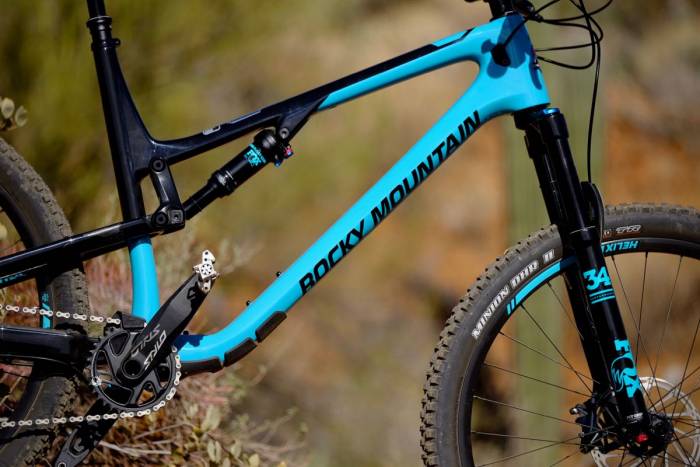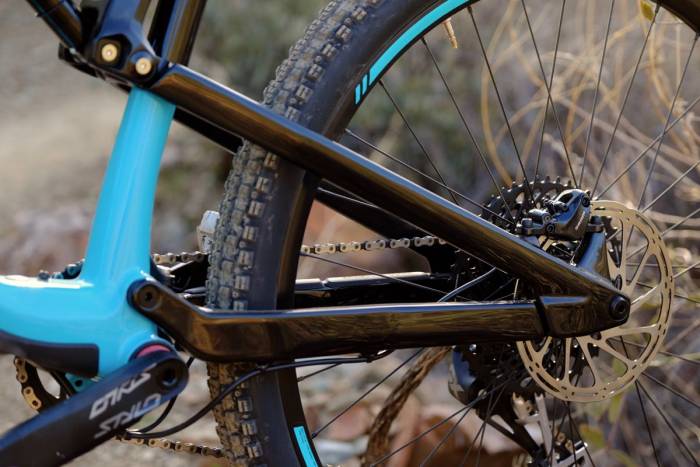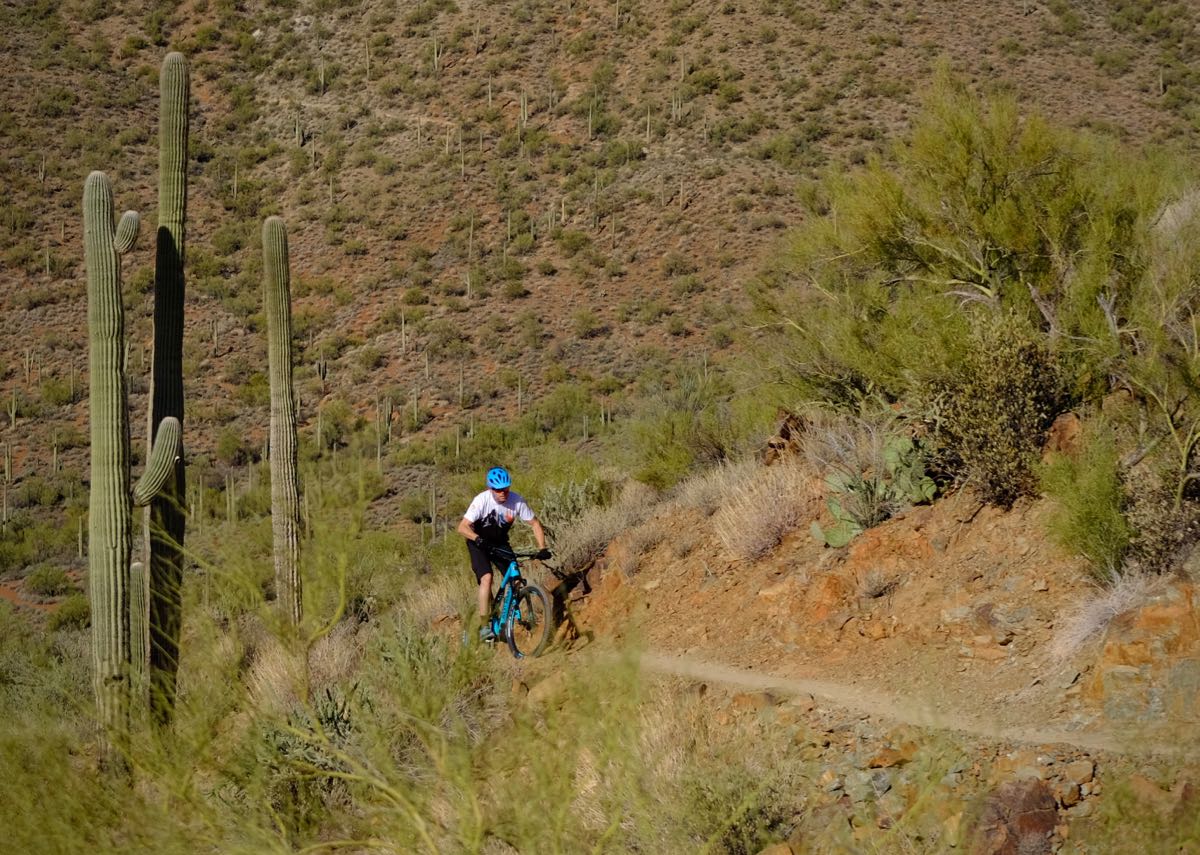Rocky Mountain storms onto the trail with its updated Thunderbolt series, including the mid-priced Carbon 50. We got an exclusive pre-launch test ride to write this review.
In the last 18 months, Rocky Mountain Bicycles has slowly revamped its entire lineup of bikes one by one.
Today it announced the release of the long-anticipated 2018 Thunderbolt Carbon series. With its 27.5-inch wheels and mid-range travel, it holds a key spot as an all-around trail bike.
The Thunderbolt Carbon 50 is new to most of the world, but I had the chance to put it to the trail well ahead of today’s launch.
In short: The Thunderbolt responds quickly to sharp corners and punches well above its weight class on the downhill. Plus, its lightweight build was a joy on long, steep climbs. Read on for our full bike breakdown.


















